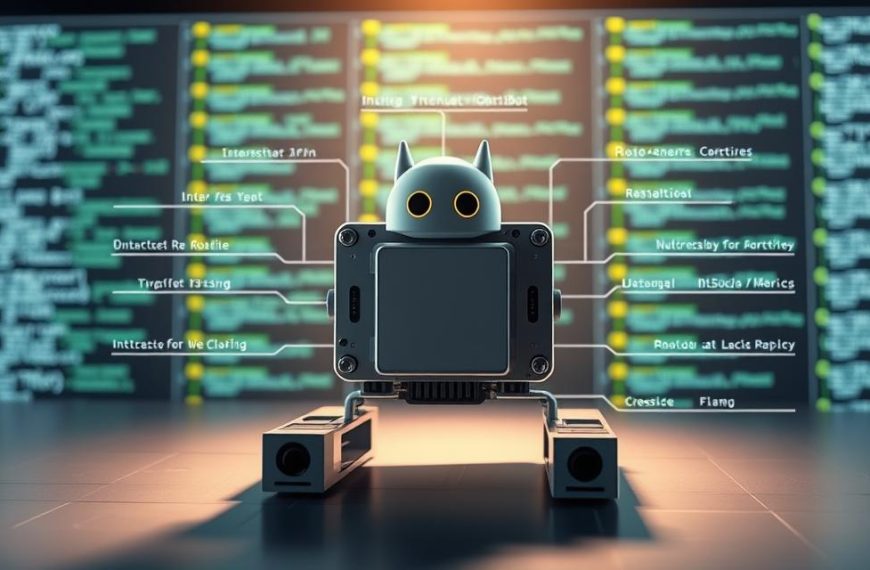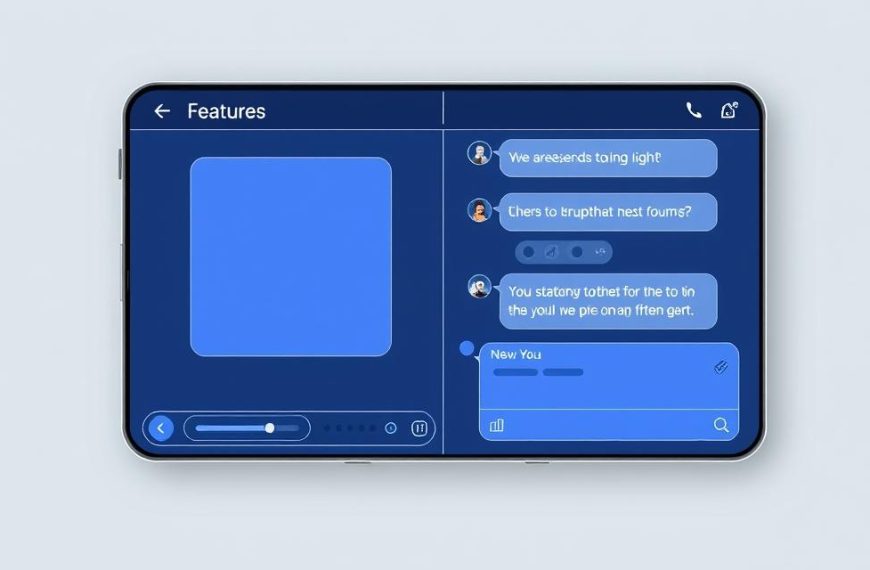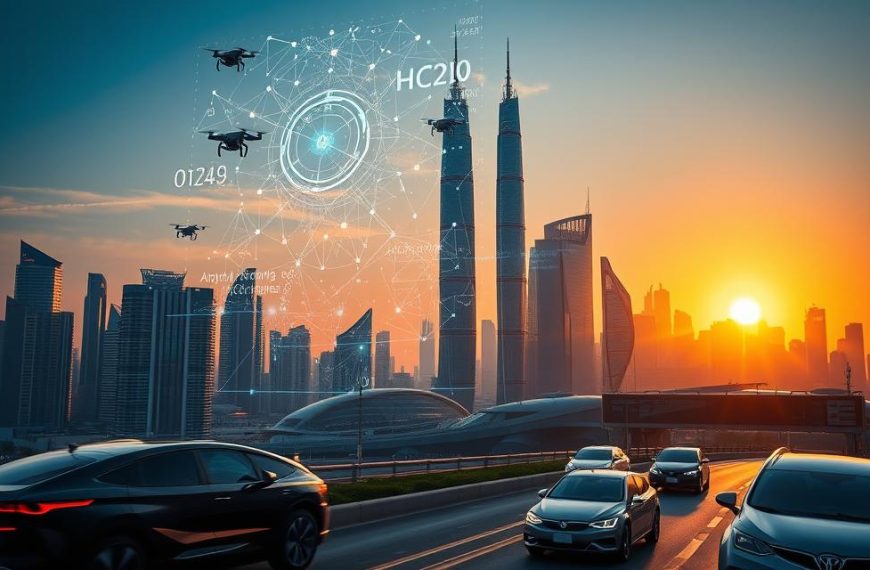Chatbots have become a staple in modern customer service, but their classification as artificial intelligence sparks debate. While some view them as simple tools, others see them as advanced systems capable of learning and adapting. IBM reports that 85% of executives believe generative AI will directly interact with customers within two years, highlighting its growing importance.
Originally, chatbots were basic programs designed to answer frequently asked questions. Today, they’ve evolved into context-aware systems powered by natural language processing. This shift has blurred the line between rule-based tools and true AI-driven solutions.
Gartner predicts that agentic AI will see significant growth by 2025, further solidifying the role of intelligent systems in customer interactions. Understanding the difference between basic and advanced chatbots is key to leveraging their full potential.
What Are Chatbots and How Do They Work?
Modern technology has introduced tools that mimic human interaction, transforming how businesses engage with users. These systems, often referred to as chatbots, simulate conversation through text or audio, providing instant responses to queries.
The concept dates back to the 1960s with ELIZA, a simple program designed to mimic human dialogue. Today, virtual agents like Domino’s “Dom” can process orders across platforms such as Alexa and Google Home, showcasing their versatility.
Definition of Chatbots
Chatbots are software applications designed to interact with users in a conversational manner. They range from basic menu-based systems to advanced interfaces powered by natural language understanding (NLU).
How Chatbots Simulate Human Conversation
These tools analyze user input to generate appropriate responses. For instance, HelloFresh’s Freddy bot reduced response times by 76%, enhancing customer support efficiency. Advanced systems leverage NLU to understand context, making interactions feel more natural.
While simple chatbots follow predefined scripts, sophisticated ones adapt to user behavior, offering personalized experiences. This evolution highlights their growing role in modern business operations.
Understanding Artificial Intelligence (AI)
The concept of machines mimicking human intelligence has evolved significantly over the decades. According to the Oxford Dictionary, AI refers to “the capacity of computers or other machines to exhibit or simulate intelligent behavior.” This definition highlights the core idea behind AI: enabling machines to perform tasks that typically require human cognition.
Definition of AI
AI encompasses a wide range of technologies designed to replicate human-like thinking. From analyzing complex datasets to making decisions, these systems rely on advanced algorithms to function. Stanford’s AI literacy framework identifies functional, ethical, and rhetorical domains, providing a comprehensive understanding of its applications.
Key Components of AI
AI’s foundation lies in three primary components: machine learning, deep learning, and natural language processing. Each plays a critical role in enabling machines to learn, adapt, and interact effectively.
| Component | Description |
|---|---|
| Machine Learning | Algorithms that allow systems to learn from data without explicit programming. |
| Deep Learning | A subset of machine learning inspired by the structure of biological brains. |
| Natural Language Processing | Enables machines to understand and generate human language. |
For instance, IBM’s watsonx leverages deep learning to automate workflows, showcasing the practical applications of these components. While narrow AI, like chatbots, excels in specific tasks, theoretical artificial general intelligence aims to replicate human-level versatility.
Are Chatbots Considered AI?
The integration of advanced systems into customer interactions has raised questions about their classification. While some tools follow predefined scripts, others adapt dynamically, leveraging sophisticated algorithms. This distinction often determines whether they are labeled as intelligent systems.
The Role of AI in Chatbot Technology
Modern conversational tools rely heavily on artificial intelligence to enhance user experiences. IBM highlights the difference between basic systems and virtual agents, which combine robotic process automation (RPA) with conversational AI. This blend enables them to handle complex tasks efficiently.
For example, Bank of America’s Erica processes over $12 billion in retail transactions annually. By using predictive analytics, it provides personalized financial guidance, showcasing the power of AI-driven systems.
How Chatbots Utilize AI
These systems employ natural language processing (NLP) to understand and respond to user queries. The NLP process involves three key stages:
- Intent Recognition: Identifying the user’s purpose.
- Entity Extraction: Pulling relevant details from the input.
- Dialogue Management: Crafting a coherent response.
Unlike traditional scripted flows, AI-powered tools continuously optimize through machine learning. Stanford’s research emphasizes the importance of ethical training data to ensure these systems align with user expectations.
This evolution underscores the growing role of intelligent technology in shaping customer interactions. As these tools become more advanced, their ability to mimic human-like processes continues to improve.
Types of Chatbots: Rule-Based vs. AI-Powered
Businesses today rely on two main types of conversational tools to enhance customer interactions: rule-based and AI-powered systems. Each serves distinct purposes, with varying levels of complexity and functionality. Understanding their differences helps organizations choose the right solution for their needs.
Rule-Based Chatbots
Rule-based systems follow predefined scripts to answer questions. They operate using decision trees, which guide them through specific paths based on user input. For example, HelloFresh’s Freddy uses this approach to handle common inquiries efficiently.
These tools excel in resolving straightforward tasks quickly. According to Zendesk, rule-based bots handle queries 47% faster than traditional methods. However, their limitations become apparent when faced with complex or unexpected questions.
AI-Powered Chatbots
AI-driven systems, like Amtrak’s Julie, leverage machine learning and natural language processing to understand context. Julie increased bookings by 25% and delivered an 8x ROI, showcasing the power of advanced technology.
These tools adapt to user behavior, offering personalized responses. For instance, Bank of America’s Erica handles over 60 million client interactions annually, providing tailored financial advice. This flexibility makes them ideal for dynamic customer needs.
| Feature | Rule-Based | AI-Powered |
|---|---|---|
| Cost | $10k-$50k | $100k+ |
| Complexity | Low | High |
| Adaptability | Limited | High |
IBM’s integration of a Teams chatbot for workflow orchestration highlights the scalability of AI-powered systems. While rule-based tools are cost-effective for simple tasks, AI-driven solutions offer long-term value for complex operations.
Technologies Behind Chatbots and AI
The foundation of intelligent conversational tools lies in advanced technologies that process and analyze data. These systems rely on sophisticated algorithms to understand and respond to user input effectively. Two key components drive their functionality: natural language processing (NLP) and machine learning.
Natural Language Processing (NLP)
NLP enables systems to interpret and generate human language. IBM reports that modern NLP achieves over 95% intent accuracy, even with typos or translation issues. The NLP pipeline involves several stages:
- Tokenization: Breaking down text into individual words or phrases.
- Lemmatization: Reducing words to their base forms for analysis.
- Sentiment Analysis: Determining the emotional tone of the input.
Stanford’s research emphasizes the importance of ethical training data to ensure these systems align with user expectations. This approach helps maintain fairness and accuracy in responses.
Machine Learning and Deep Learning
Machine learning allows systems to learn from data without explicit programming. It includes two main approaches:
| Approach | Description |
|---|---|
| Supervised Learning | Uses labeled data to train models for specific tasks. |
| Unsupervised Learning | Identifies patterns in unlabeled data for broader insights. |
Deep learning, a subset of machine learning, uses neural networks inspired by biological brains. For instance, IBM’s watsonx employs transformer architectures for real-time learning. These technologies enable systems to handle complex queries efficiently.
Advanced models like ChatGPT require significant computational resources, with 175 billion parameters. This scale ensures high accuracy and adaptability in dynamic environments.
Applications of Chatbots in Various Industries
Conversational tools have transformed industries by streamlining interactions and enhancing user experiences. From hospitality to healthcare, these systems improve efficiency and deliver personalized support. Their versatility makes them invaluable for modern business operations.
Customer Service
In the hospitality sector, tools like the Edwardian Hotel’s chatbot have revolutionized customer service. By offering multi-language support, it boosted room service sales by 50%. This highlights how tailored solutions can meet diverse user needs effectively.
IBM’s HR systems also showcase the power of automation. Handling 80% of routine employee queries, they free up resources for more complex tasks. This approach ensures seamless experiences for both staff and customers.
E-commerce and Sales
Retailers leverage these tools to drive sales and improve engagement. Sephora’s virtual assistant increased average order values by 11%, demonstrating their impact on revenue. By guiding users through product selections, they enhance shopping journeys.
Edward, another hospitality-focused system, supports guests in multiple languages. This capability ensures a smooth experience for international travelers, fostering loyalty and satisfaction.
Healthcare and HR
In healthcare, tools like Mayo Clinic’s symptom-checking system streamline triage processes. By analyzing user inputs, they provide accurate guidance, reducing wait times and improving outcomes.
IBM’s Watson Orchestrate further exemplifies their utility, cutting IT ticket resolution times significantly. Similarly, Ask Benji assists Arizona students with FAFSA applications, showcasing their adaptability across sectors.
These applications underscore the transformative potential of conversational tools in modern business environments. By addressing specific needs, they deliver measurable value to users and organizations alike.
Benefits of Using AI-Powered Chatbots
AI-driven tools are reshaping how businesses interact with their customers, offering unmatched efficiency and personalization. These systems provide significant advantages, from reducing operational costs to enhancing user satisfaction. With 52% of companies accelerating their adoption post-COVID, the impact of intelligent technology is undeniable.
24/7 Availability and Efficiency
One of the standout features of these tools is their ability to operate around the clock. Unlike traditional support teams, they don’t require breaks or downtime. This ensures that customers receive assistance whenever they need it, improving overall satisfaction.
Cost savings are another major benefit. For example, Amtrak reduced its support costs by $1 million annually by implementing an intelligent system. Live chats typically cost $8-$12 per interaction, while bots handle the same tasks for $1-$5, making them a cost-effective solution.
- HelloFresh saw a 47% increase in message volume with faster resolutions.
- IBM reports that 85% of executives believe AI will dominate customer interactions soon.
Personalized Customer Experiences
These systems excel at delivering tailored interactions. By integrating with CRM platforms, they analyze user data to provide relevant responses. This dynamic personalization enhances the overall customer experience, fostering loyalty and trust.
For instance, Nordstrom’s style recommendation engine uses advanced algorithms to suggest products based on individual preferences. This approach not only boosts sales but also creates a seamless shopping journey.
Bank of America’s Erica is another example, handling over 60 million interactions annually. By offering personalized financial advice, it demonstrates the power of intelligent systems in delivering value.
Limitations and Challenges of Chatbots
While chatbots offer significant benefits, they also come with notable challenges that businesses must address. From security risks to handling complex queries, these tools face hurdles that impact their effectiveness.
Security and Privacy Concerns
One of the most pressing issues is the risk of data leakage. Generative models, in particular, can inadvertently expose sensitive information. For example, IBM reports that 60% of enterprises face risks related to chatbot hallucinations, where systems generate inaccurate or inappropriate responses.
Bank of America’s Erica employs advanced encryption protocols to safeguard user data. Despite such measures, organizations must remain vigilant. Non-compliance with privacy regulations can lead to hefty penalties, with IBM citing an average cost of $2.4 million per incident.
“Ethical governance frameworks, like Stanford’s AI literacy guide, are essential for ensuring responsible use of these systems.”
Limitations in Complex Interactions
Chatbots often struggle with intricate queries that require human judgment. For instance, insurance claims frequently demand nuanced understanding, which automated systems cannot fully replicate. Zendesk found that 34% of users abandon chatbots when their issues remain unresolved.
Here’s a comparison of chatbot capabilities:
| Task | Chatbot Performance | Human Performance |
|---|---|---|
| Simple Queries | High | High |
| Complex Issues | Low | High |
These limitations highlight the need for hybrid solutions, where chatbots handle routine tasks, and humans address more complex scenarios.
Conclusion
The global market for conversational tools is projected to reach $9.4 billion by 2024, driven by their transformative impact on business operations. While not all systems qualify as artificial intelligence, advanced ones leverage technology like NLP and machine learning to deliver exceptional results.
Case studies from Amtrak and the Edwardian Hotel highlight significant ROI, with reduced costs and improved customer service. Hybrid models, combining AI efficiency with human oversight, are emerging as the ideal solution for complex interactions.
Future trends point toward multimodal systems integrating GPT-4 Vision and DALL-E, offering richer user experiences. IBM recommends a phased implementation approach, ensuring seamless integration and scalability.
As these tools evolve, their ability to enhance efficiency and personalization will continue to shape the future of business interactions.















